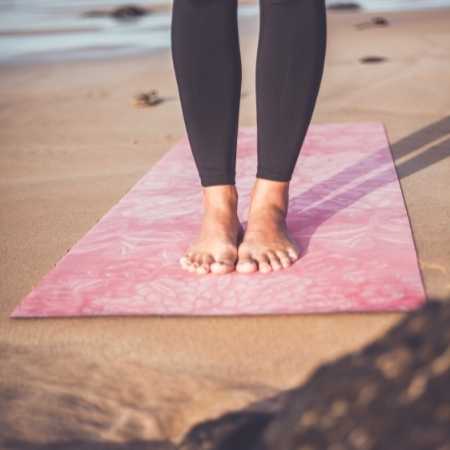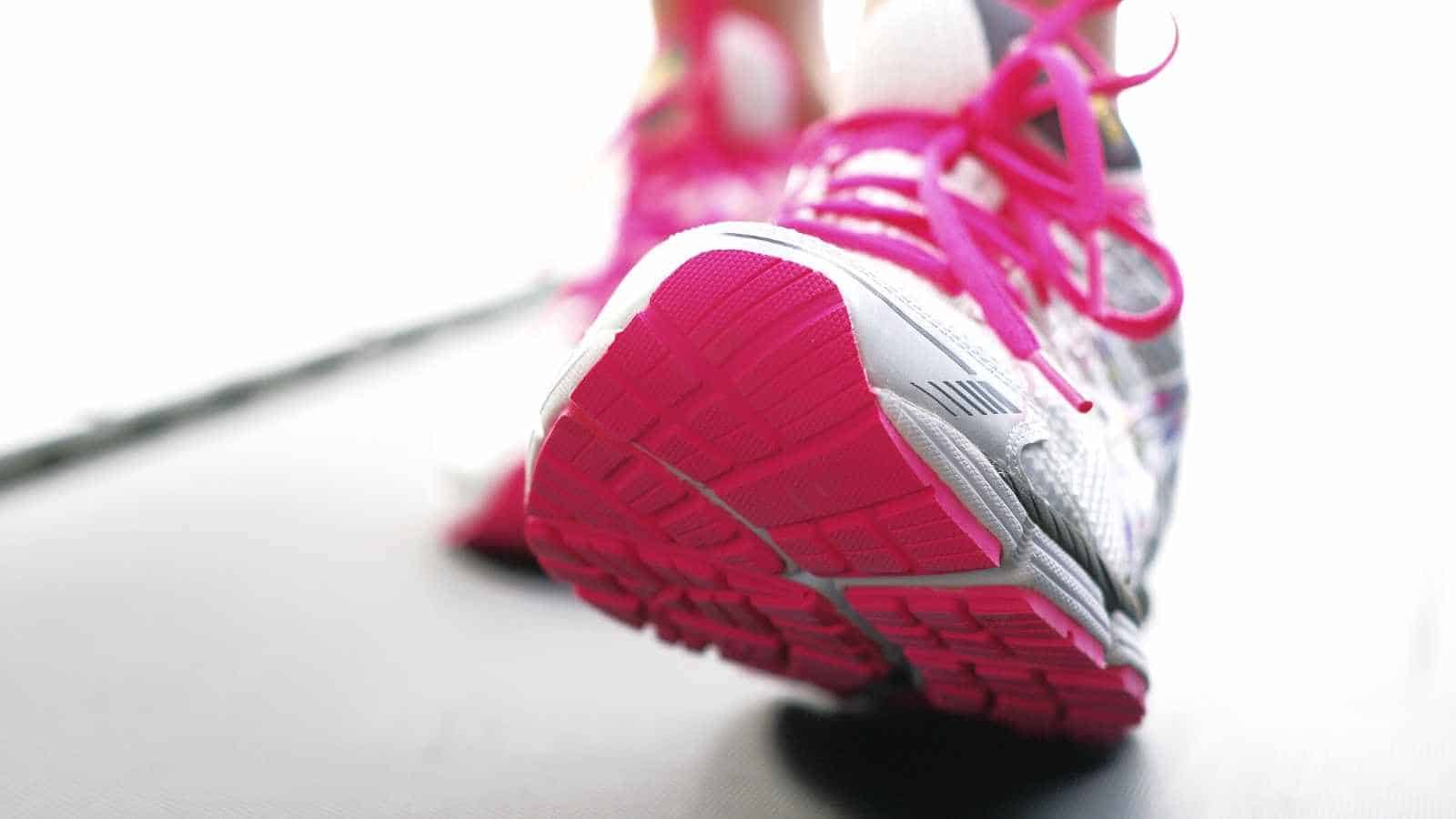While yoga mats are primarily used to practice asanas, some people have found them to be the ideal base for various types of workouts. For example, exercises that require the practitioner to move around and jump would benefit from a soft, non-slip surface to land on. But are yoga mats able to withstand the friction from your sneakers?
You can only use shoes on a yoga mat if it has a natural rubber or polyurethane material on the surface. Even then, you’ll need to check for small stones or extrusions to ensure the shoes don’t cause tears. Soft, light sports shoes are recommended over heavier training sneakers with lots of grip.
In this article, we’ll explore the best practices to keep in mind if you plan to wear shoes on your yoga mat.
Only Wear Shoes on a Yoga Mat When Doing Light Exercise
Though you can use shoes on a yoga mat, it’s crucial to determine whether the material you’re using can withstand the added pressure.
Most sneakers and sports shoes won’t cause any harm, but certain mats can get damaged if you frequently wear shoes while practicing on them. More importantly, you want to determine the kind of workout you’ll be doing on your yoga mat.
For example, exercises like push-ups and squats are relatively safe to perform as your feet tend to be in a fixed position. In addition, most mat-work can be done on a yoga mat to make being on the ground more comfortable.
These types of workouts cause less friction between your feet and the mat, keeping the mat intact.
On the other hand, burpees or other explosive leg workouts can damage the mat surface due to increased friction.
Some other light exercises you can do on a yoga mat include:
- Yoga
- Foam rolling
- Tai Chi
- Pilates
- Stretching
- Bodyweight exercises, or
- Yoga Nidra practice
If you’re planning to wear shoes, consider designing a workout plan that minimizes friction between your feet and the surface of the mat.
Alternatively, look for an exercise mat that’s designed to withstand harsher movements.
What Type of Mat Can You Wear Shoes On?
Most yogis agree that yoga should always be a barefoot practice, but in the instances that’s not possible, you’ll want to check that the mat can withstand the added friction.
It’s possible to wear shoes on PU yoga mats or those with natural rubber. These materials can withstand shoes, but they need to be quite thick for them to last. Alternatively, exercise mats made using vinyl, TPE (thermoplastic elastomer material), or EVA foam (ethylene vinyl acetate) are suitable.
One way to get that support you need while protecting your yoga mat is to add another mat on top.
For example, mats like this Supermats Heavy Duty Equipment Mat are designed to last longer and withstand more friction. Place it over the top of your regular yoga mat to get both a softer surface and one on which you can wear shoes.
When To NOT Use Shoes on a Yoga Mat
Choosing to wear shoes on a yoga mat is a personal choice, and each person will feel differently about it. And while yoga is typically practiced barefoot, it’s still possible to perform specific asanas with shoes.
Here are a few instances where it’s not ideal to wear shoes on a yoga mat.
When Doing Yoga

We mentioned that specific asanas could be performed with shoes, but it’s best to do yoga barefoot if you’re a serious practitioner.
Most asanas focus primarily on instilling a sense of grounding in the yogi. This sense of grounding starts from the feet and moves up through the entire body.
When you wear shoes, this direct connection to the ground is severed as your soles are blocked off. To add to this, the entire surface area of your sole needs to be engaged in most asanas, which can be challenging when you’re wearing shoes.
As such, your feet may not be in the ideal position to reap the benefits of yoga. In fact, if you aren’t careful, shoes can lead to misalignment during specific asanas, causing injury.
This need for added stability means it’s best to do yoga barefoot or with socks if needed.
Cork Yoga Mats
Cork mats are light, sustainable, and soft to give the yogi a comfortable surface to practice on.
Mats like FrenzyBird Extra Non-Slip Cork+Natural Rubber also offer non-slip rubber cushioning. They’re suitable for hot yoga thanks to the waterproof surface and the fact that any moisture will evaporate quickly.
If you’ve got a cork mat, avoid wearing shoes on this surface, as the grooves in the sole can quickly tear the surface.
Microfiber Yoga Mats
We’ve already established that natural rubber mats are ideal for wearing shoes. However, some rubber mats come with a microfiber covering on the surface.
Options like Yoga Design Lab microfiber top yoga mats give your palms added purchase to grip the mat when you start sweating during a session. They’re designed to cushion your body and provide a non-slip surface that will keep you in place no matter what.
However, while natural rubber is steady, this microfiber layer can easily tear if you exercise on it while wearing shoes.
Leg Workouts
While most workouts can be performed on a yoga mat, it’s best to avoid strenuous leg workouts if you’re wearing shoes. As mentioned, burpees or any other form of HIIT training that focuses intensely on the legs should be avoided.
Exercise that involves periodically taking your feet off the mat should be fine and probably won’t cause too much harm, especially if you’re wearing the right shoes.
Other exercises that aren’t recommended for yoga mats include:
- HIIT (high impact)
- Kettlebell workouts
- Kickboxing
- Cardio
- Jump Rope
- Gymnastics
Final Thoughts
It’s uncommon to wear shoes when stepping on a yoga mat, but it’s a viable option for most people who want to work out over a cushioned and sturdy base.
So if you’re planning to wear shoes, it’s best to take precautions to prevent damaging the mat and prolonging its life. Also, make sure you have the correct type of mat, such as natural rubber.





